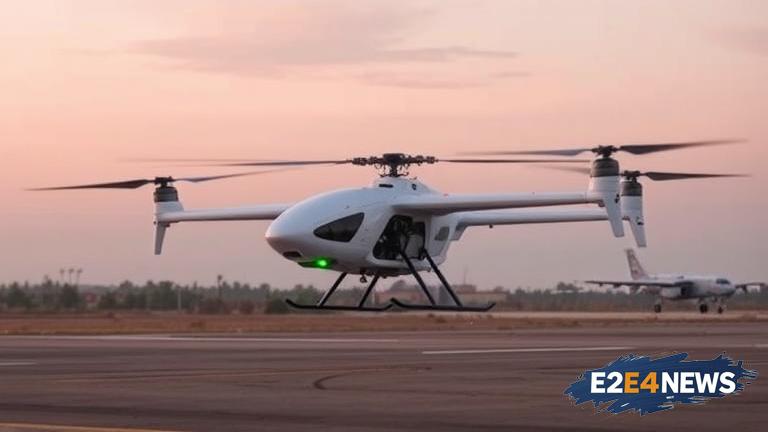The Federal Aviation Administration (FAA) has taken a significant step towards the development and integration of electric vertical takeoff and landing (eVTOL) aircraft into the national airspace system. The new guidelines, which were released in response to the growing interest in eVTOL technology, provide a framework for manufacturers to follow as they design and build these innovative aircraft. eVTOLs are a type of aircraft that use electric motors and rotors to take off and land vertically, similar to helicopters, but are designed to be more efficient and environmentally friendly. The FAA’s new guidance addresses a range of issues related to eVTOL design, testing, and certification, including the use of electric propulsion systems, the design of rotors and control systems, and the integration of automated systems. The guidelines also provide information on the types of tests and evaluations that will be required to demonstrate the safety and performance of eVTOL aircraft. According to the FAA, the new guidance is intended to be flexible and adaptable, allowing manufacturers to innovate and experiment with new designs and technologies while still ensuring the safety of the public. The development of eVTOL aircraft is seen as a key part of the future of urban air mobility, with the potential to revolutionize the way people travel in cities and reduce congestion on the ground. Several companies, including Uber and Boeing, are already working on eVTOL projects, and the FAA’s new guidance is expected to help accelerate the development and deployment of these aircraft. However, the integration of eVTOLs into the national airspace system will also require significant investments in infrastructure, including the development of vertiports and charging stations. The FAA is working closely with industry stakeholders and other government agencies to address these challenges and ensure a smooth transition to a future with eVTOL aircraft. The new guidance is also expected to have implications for the development of other types of electric aircraft, including electric horizontal takeoff and landing (eHTOL) aircraft. As the aviation industry continues to evolve and innovate, the FAA’s guidance on eVTOL aircraft is seen as an important step towards a more sustainable and efficient future. The FAA’s decision to issue new guidance on eVTOL aircraft reflects the agency’s commitment to supporting innovation and safety in the aviation industry. The guidelines are expected to be widely adopted by manufacturers and will help to establish a common set of standards and best practices for the development and certification of eVTOL aircraft. Overall, the FAA’s new guidance on eVTOL aircraft is a significant development that is expected to have far-reaching implications for the aviation industry and the future of urban air mobility.
